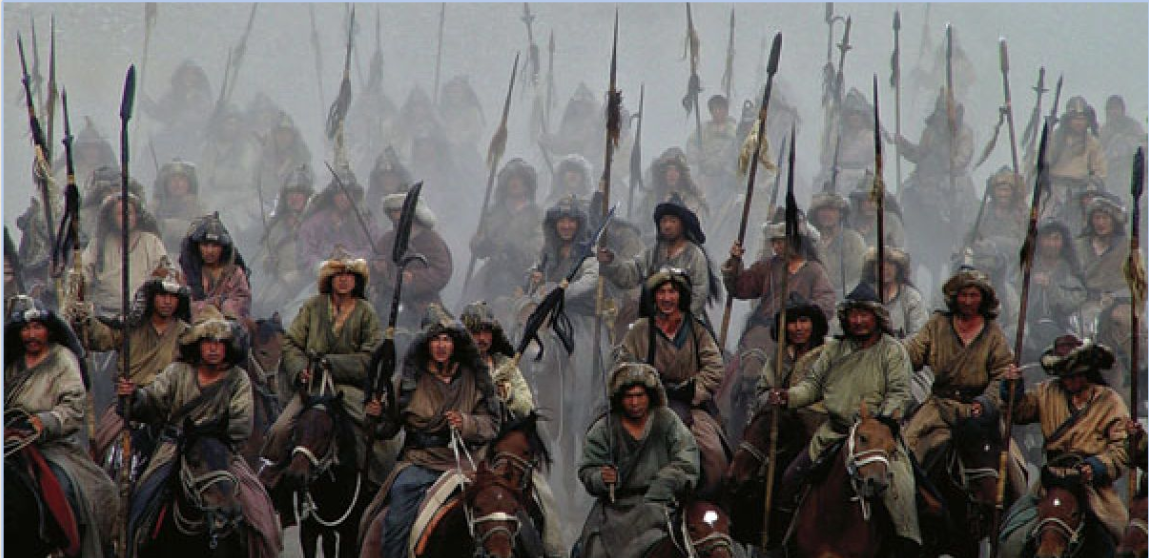
AP MODERN HUMAN GEO UNIT 2
Unit 2.1 (The Silk Roads)
**https://www.youtube.com/watch?v=Vi6aLWr6HZw&list=PLEHRHjICEfDVlP4J7Zn1_LFTm_-8bkxpN**Background
More than 1,300 years after the first accounts of travel on the Silk Roads these routes were revived by the 8th-9th centuries.
The Silk Roads were essential to interregional trade in the 14th-15th centuries.
Demand for luxury goods increased in Europe and Africa, and Chinese, Persian, and Indian artisans and merchants expanded the production of textiles and porcelains for export.
Caravans made travel safer and more practical, and the Chinese developed a system using paper money to manage increasing trade.
First Golden Age of Silk Roads
Came to an end after the collapse of classical civilizations (Roman and Han empires), and activity declined dramatically.
The second golden age of the Silk Roads (8th-9th centuries)
Arab merchants from the Abbasid Empire revived the land route of the Silk Roads and sea routes in the Indian Ocean.
Tang China offered compass, paper, and gunpowder to the newly revived global trade network, and exported porcelain, tea, and silk.
From other parts of Asia, China imported cotton, precious stones, pomegranates, dates, horses, and grapes.
Luxury goods appealed to the upper class of Chinese society, whose members celebrated their country's newfound affluence.
Crusades: Helped expand networks of exchange, as lords and their armies of knights brought back fabrics and spices from the East.
Despite attacks on the Byzantine Empire by Ottoman Turks, Silk Road trade routes remained in operation, as did sea routes across the Mediterranean Sea and Indian Ocean.
China was eager for Europe's gold and silver, and Europe wanted silk, tea, and rhubarb. Global trade increased.
Europeans had not yet found a route around Cape of Good Hope (the southern tip of Africa), but had been making overland trips across Europe for many centuries other causes had as significant an impact on the expansion of trade as the rise of the Mongol Empire.
Mongols conquered the Abbasid Caliphate in 1258, and in the 14th century, China came under their control.
Causes of the Growth of Exchange Networks
Parts of the Silk Roads that were under authority of different rulers were, for first time, unified under an authority that respected merchants and enforced laws.
The Mongols improved roads and punished bandits, increasing safety of travel on the Silk Roads.
New trade channels were established between Asia, Middle East, Africa, and Europe.
Those who survived conquests by Mongols and their descendants benefited from reinvigoration of trade routes that had not been heavily used since days of the Roman and Han Empires (2.2).Improvement in transportation: Led to expansion of exchange networks.
Travelers on overland Silk Roads learned traveling with others in caravans was safer than traveling alone.
They also learned how to design saddles for camels that greatly increased weight animals could carry.Centuries earlier, the Han Dynasty made advances in naval technology allowing control of sea-based trade routes in South China Sea.
Chinese scientists developed magnetic compass and improved rudder, aiding in navigation and ship control along seas.
Chinese junk ship similar to Southwest Asian dhow:
Had multiple sails and was as long as 400 feet (triple the size of typical Western European ship of its time).
Hull of a junk was divided into compartments.
The walls making these divisions strengthened ship for rough voyages at sea and made sinking less likely.
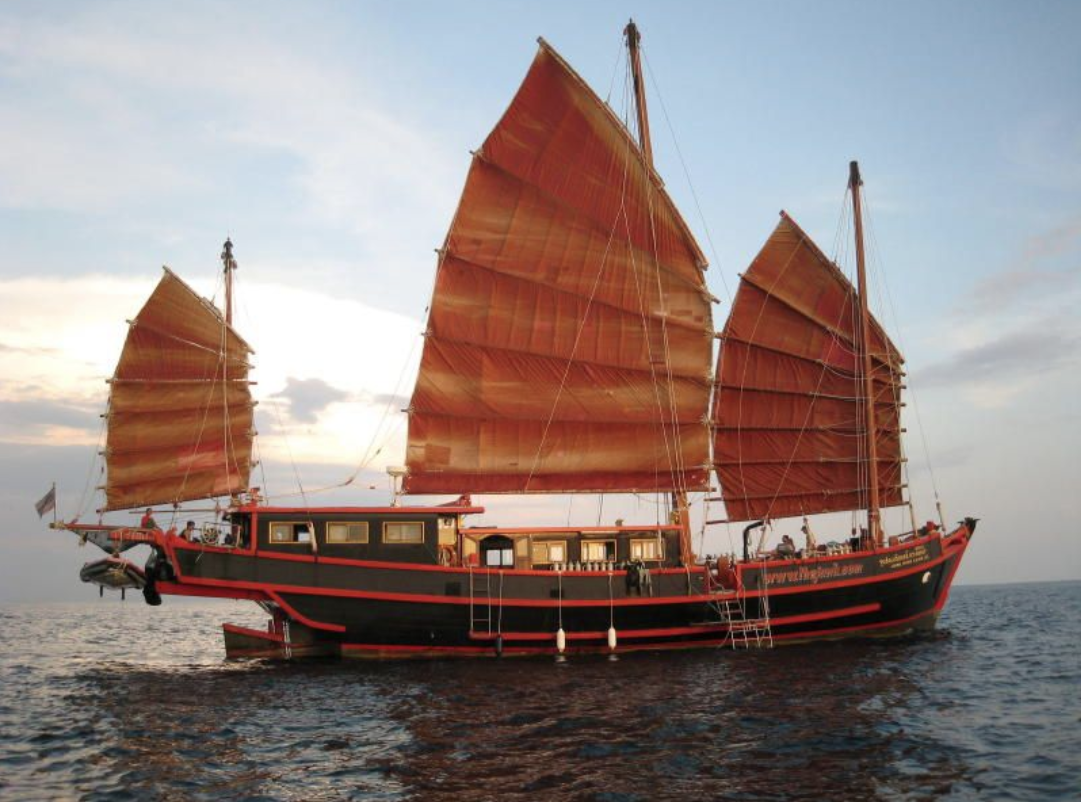
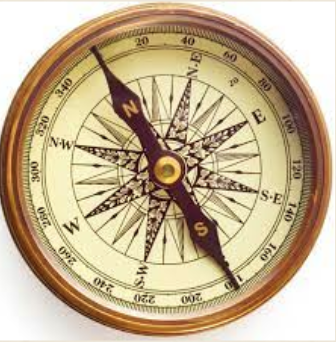
Effects of the Growth of Exchange Networks
Two significant effects of the expansion and stability of the Silk Roads were:
The series of oases developed along the routes, including thriving cities
Commercial innovations that greatly helped to manage the increasing trade.Long stretches of overland Silk Roads passed through inhospitable terrain (hot arid lands where water was scarce).
Cities along routes that were watered by rivers became thriving centers of trade.
City of Kashgar: Located at western edge of China where northern and southern routes of Silk Roads crossed, leading to destinations in Central Asia, India, Pakistan, and Persia.Kashgar sits where Taklamakan Desert meets Tian Shan Mountains (watered by Kashgar River), making the lands along it fertile for crops (wheat, rice, fruits, and cotton).
Travelers on Silk Roads depended on Kashgar for its abundance of water and food.
Artisans in Kashgar produced textiles, rugs, leather goods, and pottery.
Its food and handicrafts were sold in a bustling market.
At the crossroads of ideas and goods, the once primarily Buddhist city also became a center of Islamic scholarship.
Samarkand: In present-day Uzbekistan in Zeravshan River valley, was stopping point on Silk Roads between China and Mediterranean.
Samarkand was center of cultural exchange and trading goods.
Archaeological remains show presence of diverse religions, including Christianity, Buddhism, Zoroastrianism, and Islam.
Like Kashgar, Samarkand was known for artisans, centers of Islamic learning, and magnificently decorated mosques.
Large flourishing trading cities were not the only oases along arid Silk Roads.
Once routes of Silk Roads became stabilized, inns known as caravanserai sprang up, about 100 miles apart.
That distance is how far camels could travel before they needed water.
At caravanserai, travelers could rest themselves and their animals and sometimes trade their animals for fresh ones.
The word caravanserai derives from Persian words for caravan and palace.
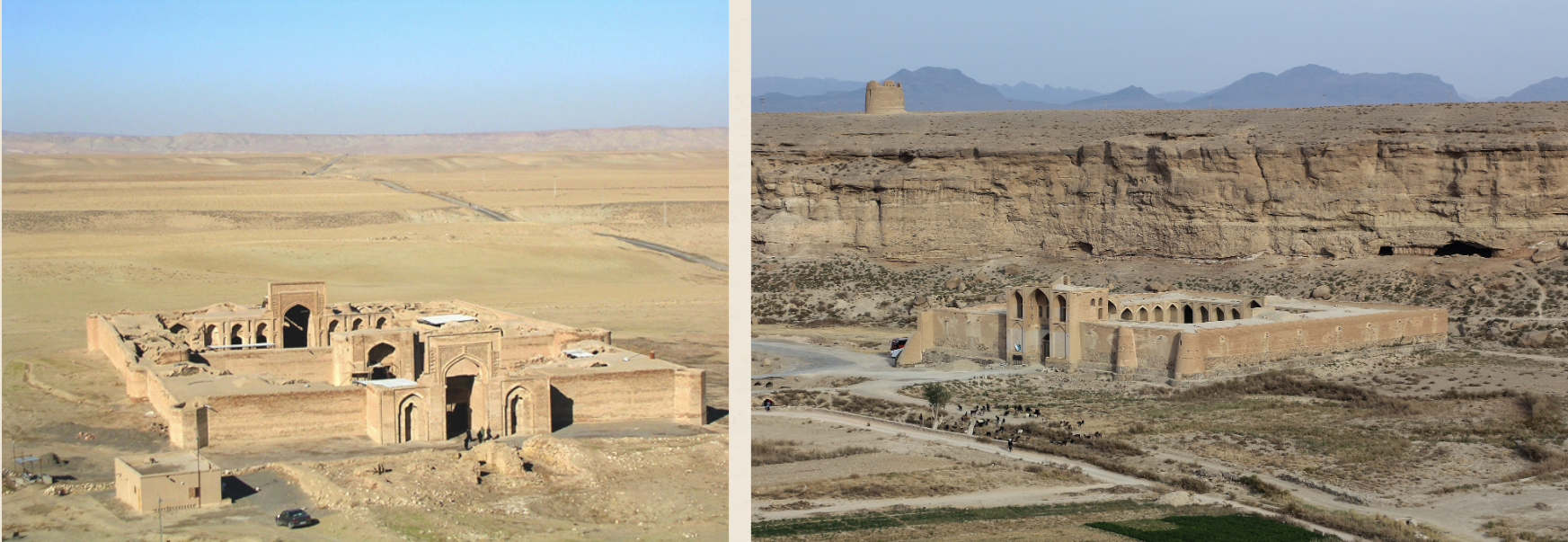
New financial systems
Developed in China to manage increasing trade
Money Economy: China had long used money rather than bartering with commodities like cowrie shells or salt.
Flying Cash: Copper coins they used became too unmanageable to transport for everyday transactions, so the government developed a system of credit.
This allowed a merchant to deposit paper money under his name in one location and withdraw the same amount at another location.
Locations for exchanging flying cash became model for banks of modern era, including banking houses established in European cities in 1300s.
Bill of Exchange: At a banking house, a person could present a document stating the holder was legally promised payment of a set amount on a set date and receive that amount of money in exchange.
Each of these innovations encouraged and supported trade by providing convenience and the stability of institutions.
Crusades awakened Europeans' interest in luxury goods from Asia, and to acquire them they organized the trade of European resources.
Hanseatic League: In the 13th century cities in northern Germany and Scandinavia formed a commercial alliance
Controlling trade in North Sea and Baltic Sea, member cities of the league (Lubeck, Hamburg, Riga), were able to drive out pirates and monopolize trade in goods such as timber, grain, leather, and salted fish.
League ships would leave Baltic and North Seas, round Atlantic Coast of Western Europe, headed towards Mediterranean ports, where they might pick up valuable goods from Arab caravans.
The league lasted until mid-17th century, when national governments became strong enough to protect merchants.
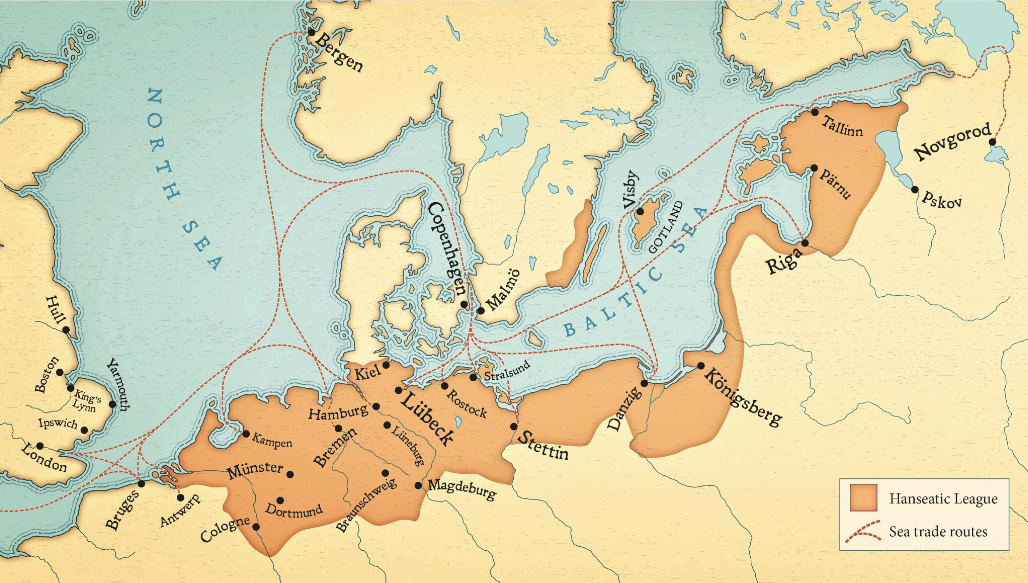 Growing demand for luxury goods from Afro-Eurasia, China, Persia, and India led to increase in supply of goods through expanded production.
Growing demand for luxury goods from Afro-Eurasia, China, Persia, and India led to increase in supply of goods through expanded production.Craftworkers expanded production of such goods as silk and other textiles and porcelains for export.
Increased demand led to expansion of iron and steel manufactured in China, motivating its proto-industrialization.
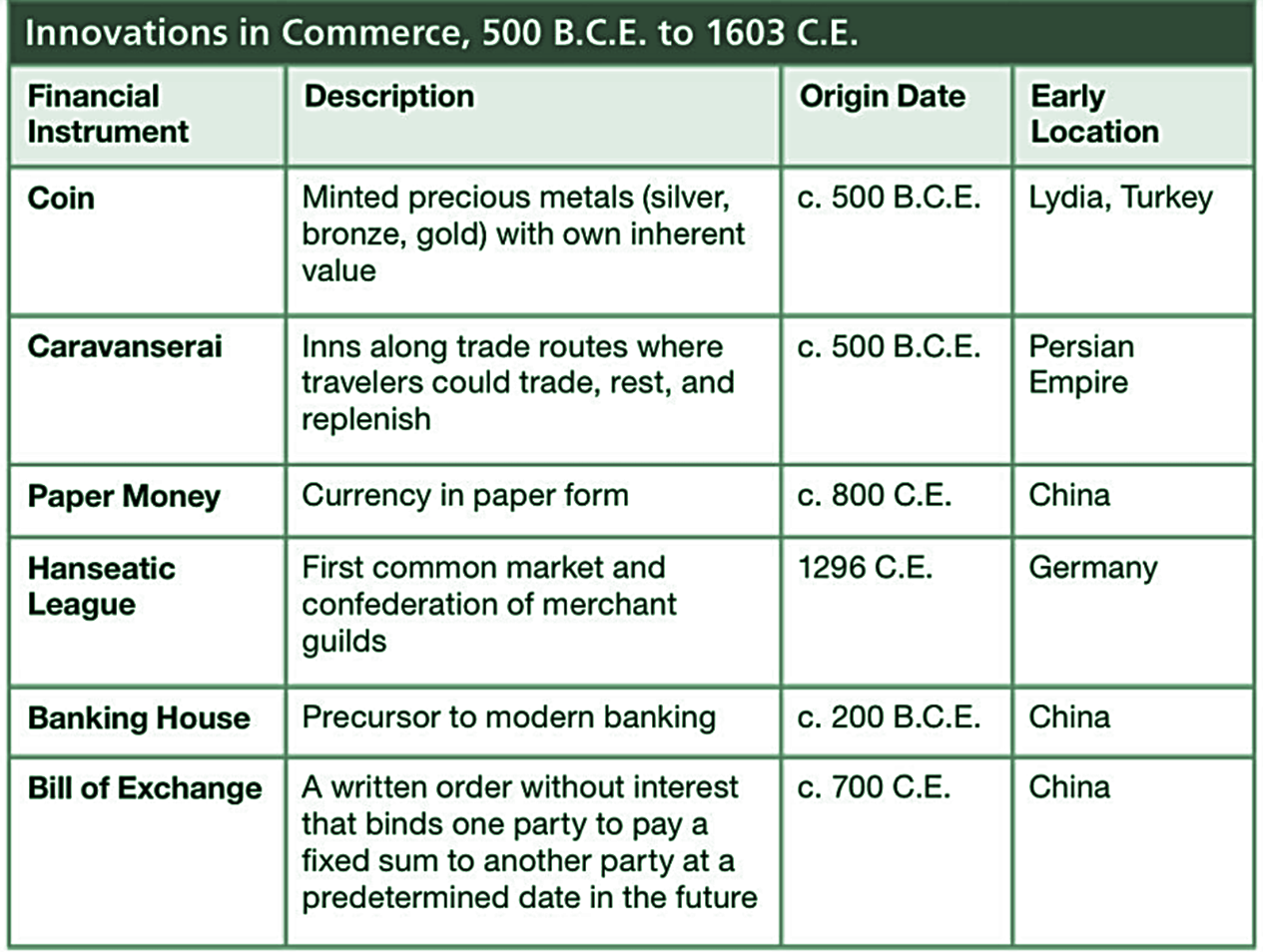 {{
{{
{{
Unit 2.2 (The Mongol Empire)
https://www.youtube.com/watch?v=m0AXxXR6KwY&list=PLEHRHjICEfDVlP4J7Zn1_LFTm_-8bkxpN&index=2
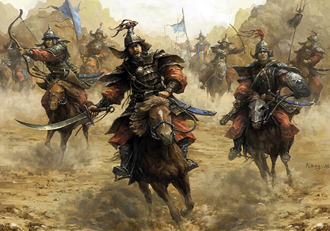
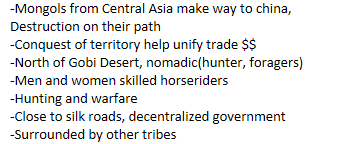







Unit 2.3 (Exchange in the Indian Ocean)
https://www.youtube.com/watch?v=Vi6aLWr6HZw&list=PLEHRHjICEfDVlP4J7Zn1_LFTm_-8bkxpN





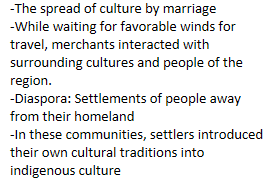
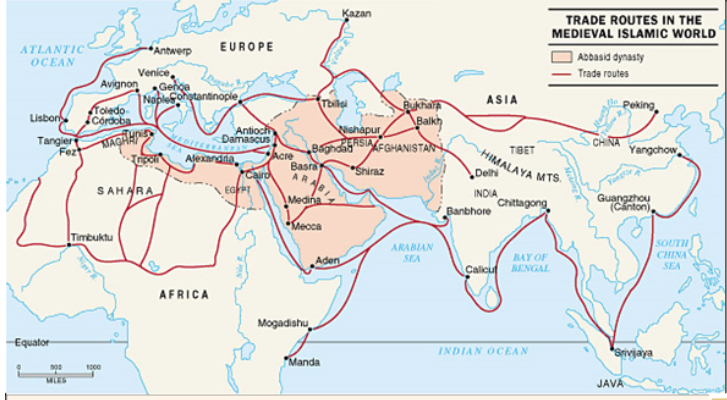


Unit 2.4 (Trans- Saharan Trade Routes)


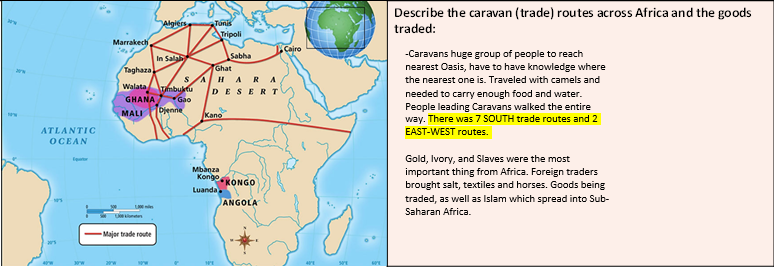
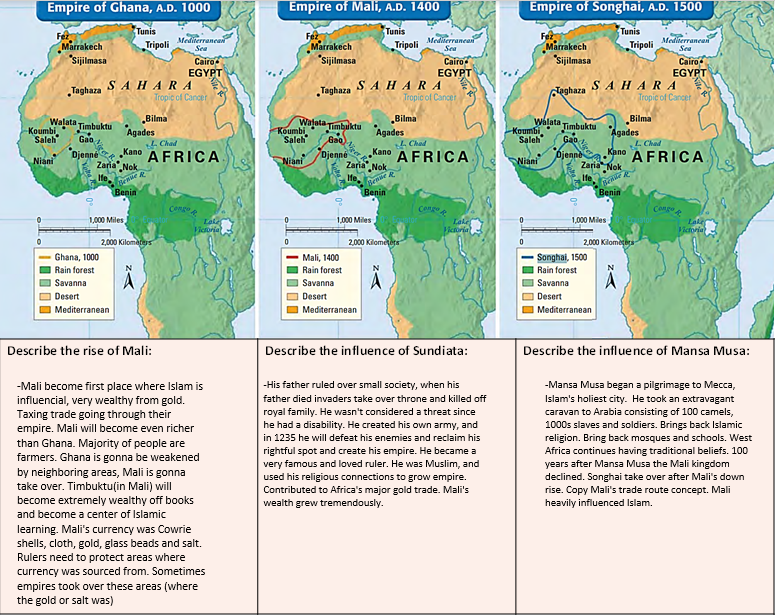
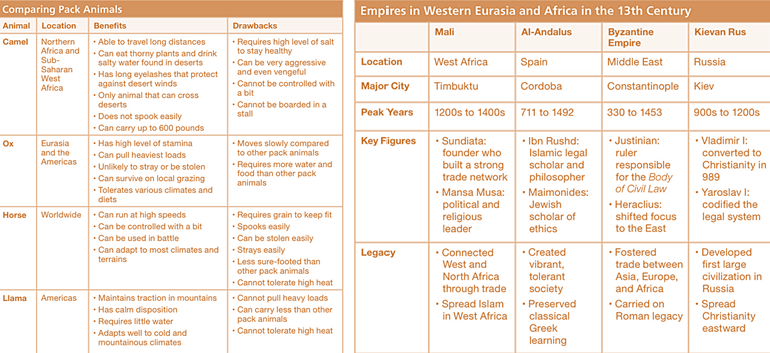
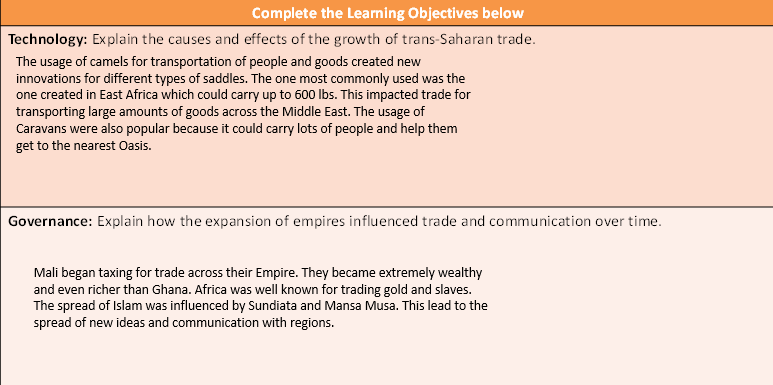
Unit 2.5 (Cultural Consequences of Connectivity)
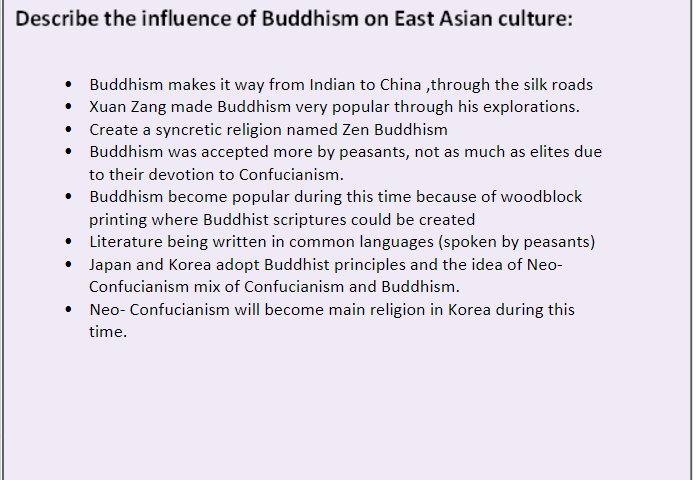

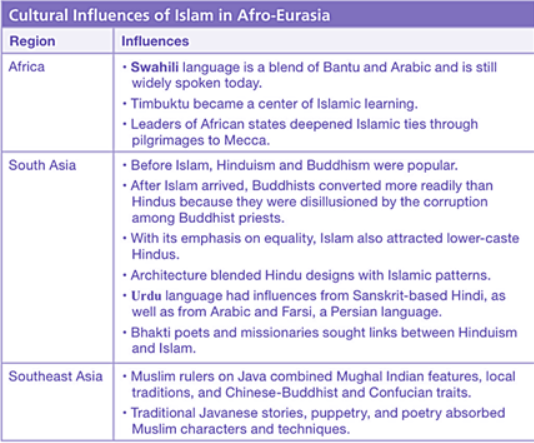

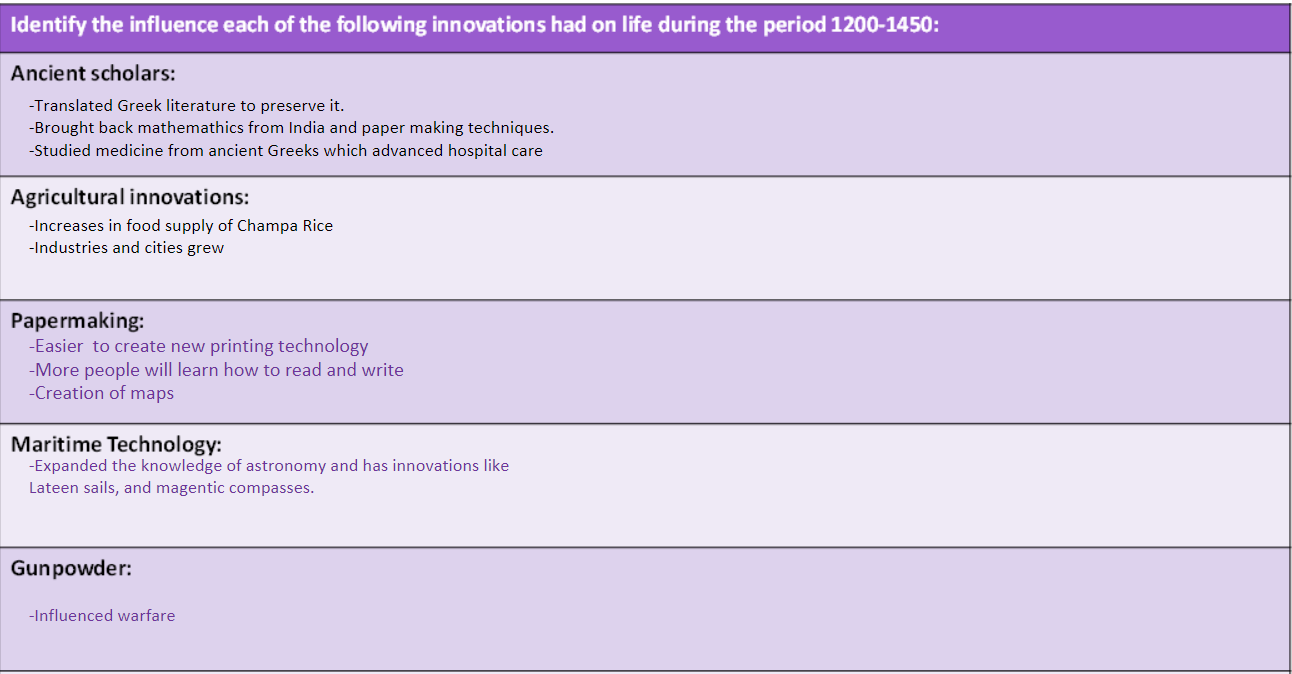





Unit 2.6 (Environmental Consequences of Connectivity)
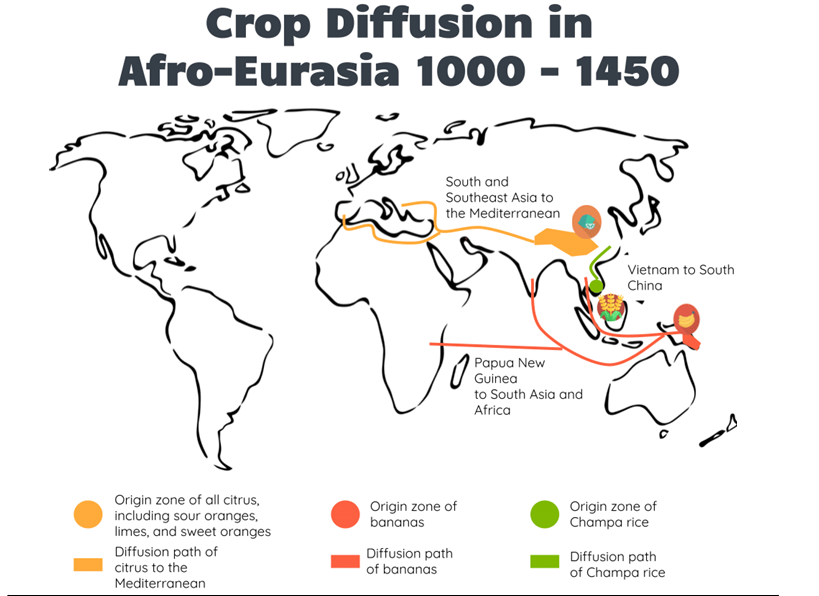


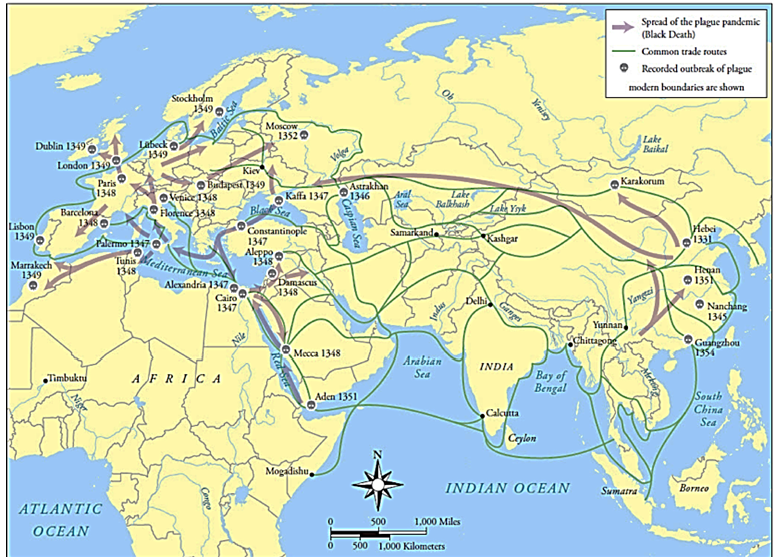

Unit 2.7 (Unit 2 Review)
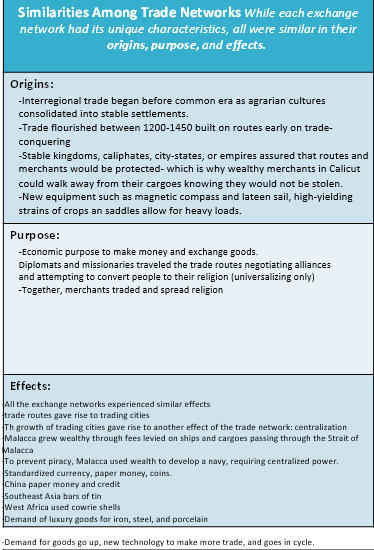
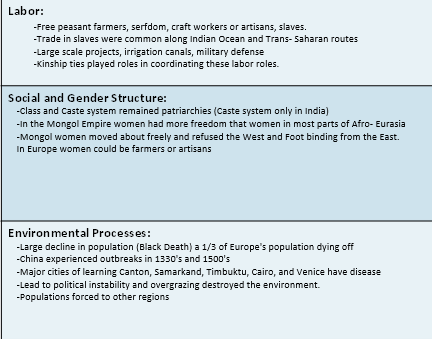
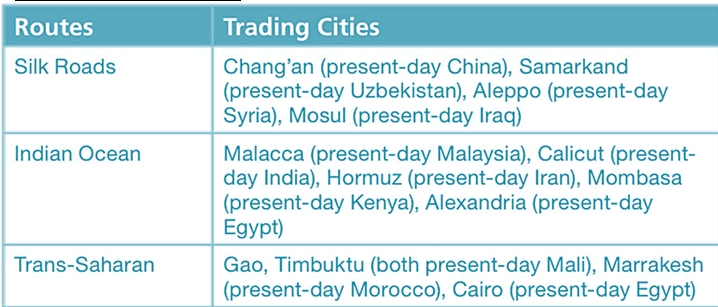
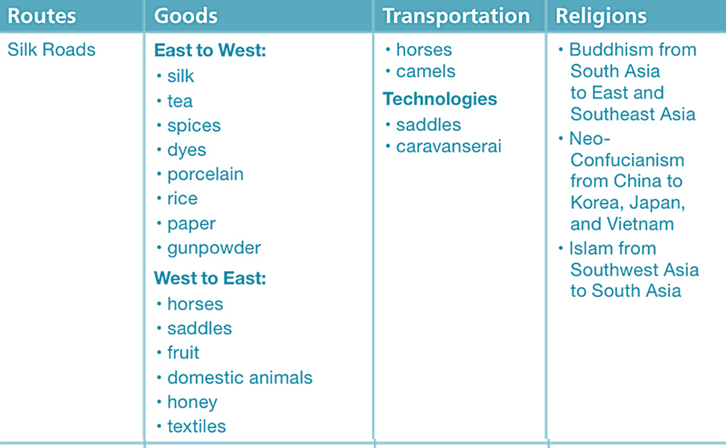
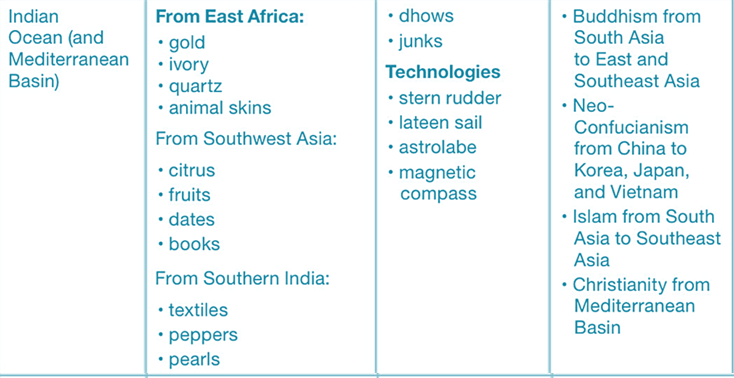
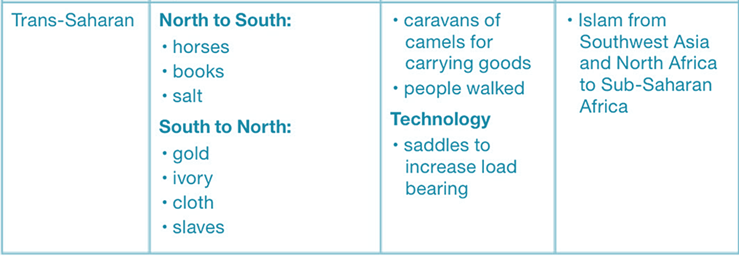
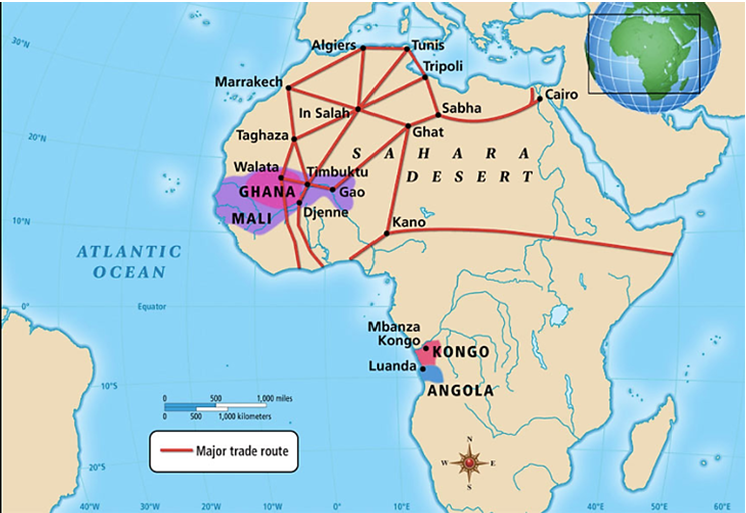
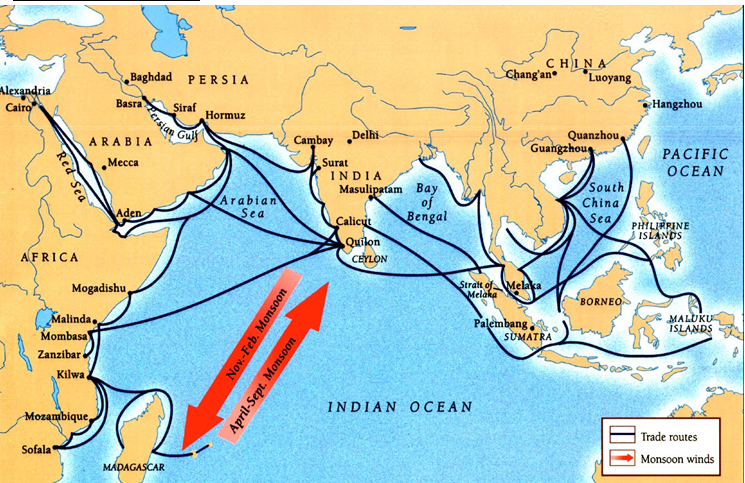
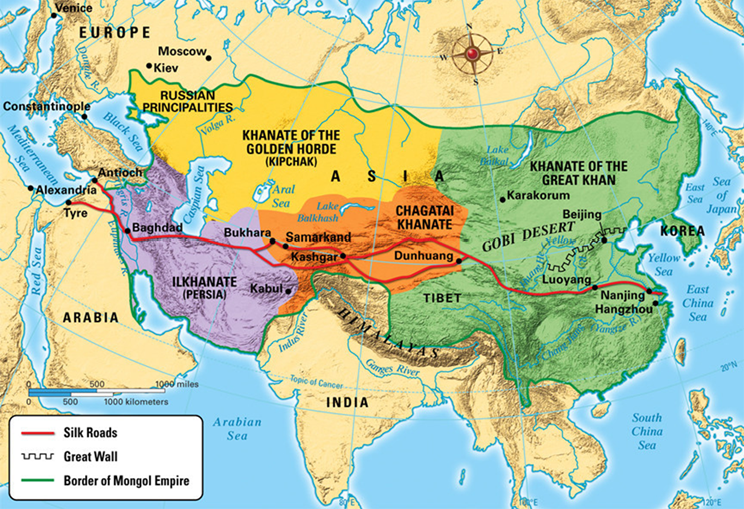
AP MODERN HUMAN GEO UNIT 2
Unit 2.1 (The Silk Roads)
**https://www.youtube.com/watch?v=Vi6aLWr6HZw&list=PLEHRHjICEfDVlP4J7Zn1_LFTm_-8bkxpN**Background
More than 1,300 years after the first accounts of travel on the Silk Roads these routes were revived by the 8th-9th centuries.
The Silk Roads were essential to interregional trade in the 14th-15th centuries.
Demand for luxury goods increased in Europe and Africa, and Chinese, Persian, and Indian artisans and merchants expanded the production of textiles and porcelains for export.
Caravans made travel safer and more practical, and the Chinese developed a system using paper money to manage increasing trade.
First Golden Age of Silk Roads
Came to an end after the collapse of classical civilizations (Roman and Han empires), and activity declined dramatically.
The second golden age of the Silk Roads (8th-9th centuries)
Arab merchants from the Abbasid Empire revived the land route of the Silk Roads and sea routes in the Indian Ocean.
Tang China offered compass, paper, and gunpowder to the newly revived global trade network, and exported porcelain, tea, and silk.
From other parts of Asia, China imported cotton, precious stones, pomegranates, dates, horses, and grapes.
Luxury goods appealed to the upper class of Chinese society, whose members celebrated their country's newfound affluence.
Crusades: Helped expand networks of exchange, as lords and their armies of knights brought back fabrics and spices from the East.
Despite attacks on the Byzantine Empire by Ottoman Turks, Silk Road trade routes remained in operation, as did sea routes across the Mediterranean Sea and Indian Ocean.
China was eager for Europe's gold and silver, and Europe wanted silk, tea, and rhubarb. Global trade increased.
Europeans had not yet found a route around Cape of Good Hope (the southern tip of Africa), but had been making overland trips across Europe for many centuries other causes had as significant an impact on the expansion of trade as the rise of the Mongol Empire.
Mongols conquered the Abbasid Caliphate in 1258, and in the 14th century, China came under their control.
Causes of the Growth of Exchange Networks
Parts of the Silk Roads that were under authority of different rulers were, for first time, unified under an authority that respected merchants and enforced laws.
The Mongols improved roads and punished bandits, increasing safety of travel on the Silk Roads.
New trade channels were established between Asia, Middle East, Africa, and Europe.
Those who survived conquests by Mongols and their descendants benefited from reinvigoration of trade routes that had not been heavily used since days of the Roman and Han Empires (2.2).Improvement in transportation: Led to expansion of exchange networks.
Travelers on overland Silk Roads learned traveling with others in caravans was safer than traveling alone.
They also learned how to design saddles for camels that greatly increased weight animals could carry.Centuries earlier, the Han Dynasty made advances in naval technology allowing control of sea-based trade routes in South China Sea.
Chinese scientists developed magnetic compass and improved rudder, aiding in navigation and ship control along seas.
Chinese junk ship similar to Southwest Asian dhow:
Had multiple sails and was as long as 400 feet (triple the size of typical Western European ship of its time).
Hull of a junk was divided into compartments.
The walls making these divisions strengthened ship for rough voyages at sea and made sinking less likely.


Effects of the Growth of Exchange Networks
Two significant effects of the expansion and stability of the Silk Roads were:
The series of oases developed along the routes, including thriving cities
Commercial innovations that greatly helped to manage the increasing trade.Long stretches of overland Silk Roads passed through inhospitable terrain (hot arid lands where water was scarce).
Cities along routes that were watered by rivers became thriving centers of trade.
City of Kashgar: Located at western edge of China where northern and southern routes of Silk Roads crossed, leading to destinations in Central Asia, India, Pakistan, and Persia.Kashgar sits where Taklamakan Desert meets Tian Shan Mountains (watered by Kashgar River), making the lands along it fertile for crops (wheat, rice, fruits, and cotton).
Travelers on Silk Roads depended on Kashgar for its abundance of water and food.
Artisans in Kashgar produced textiles, rugs, leather goods, and pottery.
Its food and handicrafts were sold in a bustling market.
At the crossroads of ideas and goods, the once primarily Buddhist city also became a center of Islamic scholarship.
Samarkand: In present-day Uzbekistan in Zeravshan River valley, was stopping point on Silk Roads between China and Mediterranean.
Samarkand was center of cultural exchange and trading goods.
Archaeological remains show presence of diverse religions, including Christianity, Buddhism, Zoroastrianism, and Islam.
Like Kashgar, Samarkand was known for artisans, centers of Islamic learning, and magnificently decorated mosques.
Large flourishing trading cities were not the only oases along arid Silk Roads.
Once routes of Silk Roads became stabilized, inns known as caravanserai sprang up, about 100 miles apart.
That distance is how far camels could travel before they needed water.
At caravanserai, travelers could rest themselves and their animals and sometimes trade their animals for fresh ones.
The word caravanserai derives from Persian words for caravan and palace.

New financial systems
Developed in China to manage increasing trade
Money Economy: China had long used money rather than bartering with commodities like cowrie shells or salt.
Flying Cash: Copper coins they used became too unmanageable to transport for everyday transactions, so the government developed a system of credit.
This allowed a merchant to deposit paper money under his name in one location and withdraw the same amount at another location.
Locations for exchanging flying cash became model for banks of modern era, including banking houses established in European cities in 1300s.
Bill of Exchange: At a banking house, a person could present a document stating the holder was legally promised payment of a set amount on a set date and receive that amount of money in exchange.
Each of these innovations encouraged and supported trade by providing convenience and the stability of institutions.
Crusades awakened Europeans' interest in luxury goods from Asia, and to acquire them they organized the trade of European resources.
Hanseatic League: In the 13th century cities in northern Germany and Scandinavia formed a commercial alliance
Controlling trade in North Sea and Baltic Sea, member cities of the league (Lubeck, Hamburg, Riga), were able to drive out pirates and monopolize trade in goods such as timber, grain, leather, and salted fish.
League ships would leave Baltic and North Seas, round Atlantic Coast of Western Europe, headed towards Mediterranean ports, where they might pick up valuable goods from Arab caravans.
The league lasted until mid-17th century, when national governments became strong enough to protect merchants.
 Growing demand for luxury goods from Afro-Eurasia, China, Persia, and India led to increase in supply of goods through expanded production.
Growing demand for luxury goods from Afro-Eurasia, China, Persia, and India led to increase in supply of goods through expanded production.Craftworkers expanded production of such goods as silk and other textiles and porcelains for export.
Increased demand led to expansion of iron and steel manufactured in China, motivating its proto-industrialization.
 {{
{{
{{
Unit 2.2 (The Mongol Empire)
https://www.youtube.com/watch?v=m0AXxXR6KwY&list=PLEHRHjICEfDVlP4J7Zn1_LFTm_-8bkxpN&index=2









Unit 2.3 (Exchange in the Indian Ocean)
https://www.youtube.com/watch?v=Vi6aLWr6HZw&list=PLEHRHjICEfDVlP4J7Zn1_LFTm_-8bkxpN









Unit 2.4 (Trans- Saharan Trade Routes)






Unit 2.5 (Cultural Consequences of Connectivity)










Unit 2.6 (Environmental Consequences of Connectivity)





Unit 2.7 (Unit 2 Review)









 Knowt
Knowt
